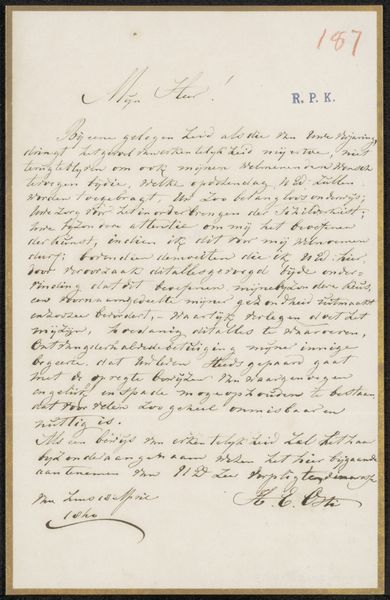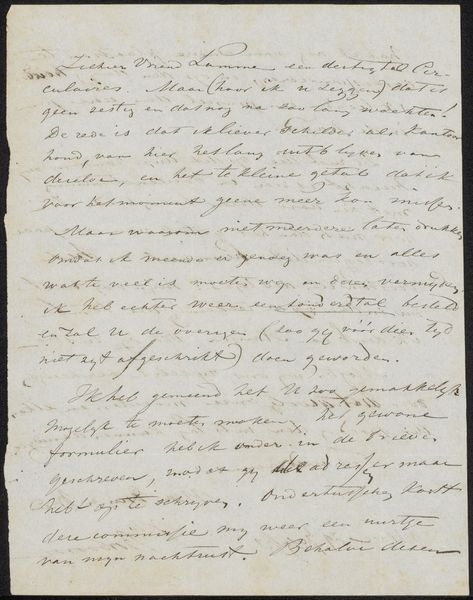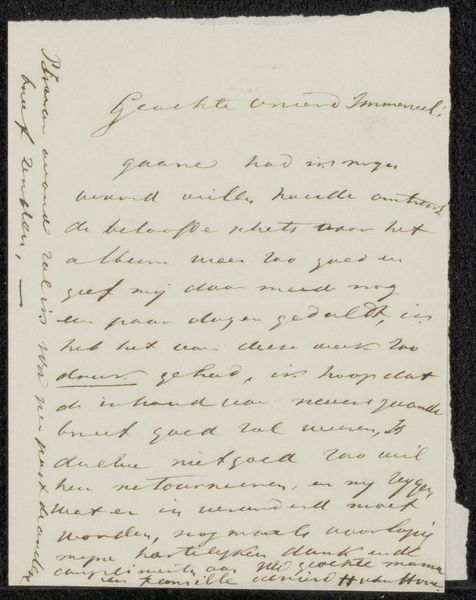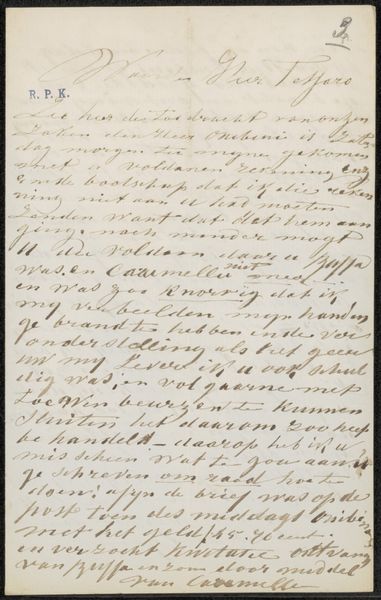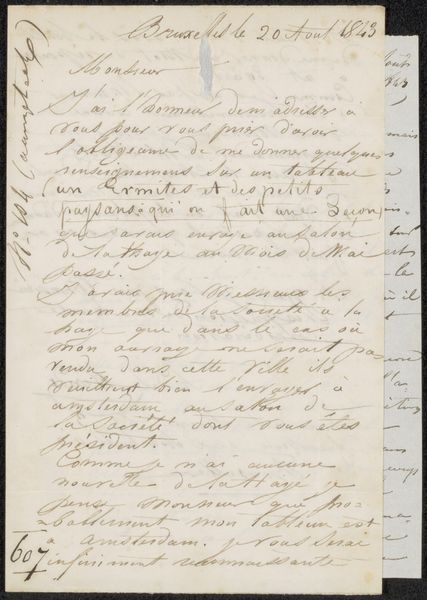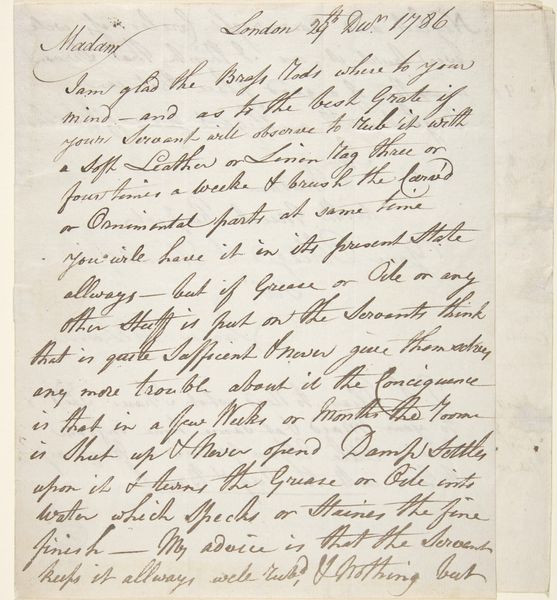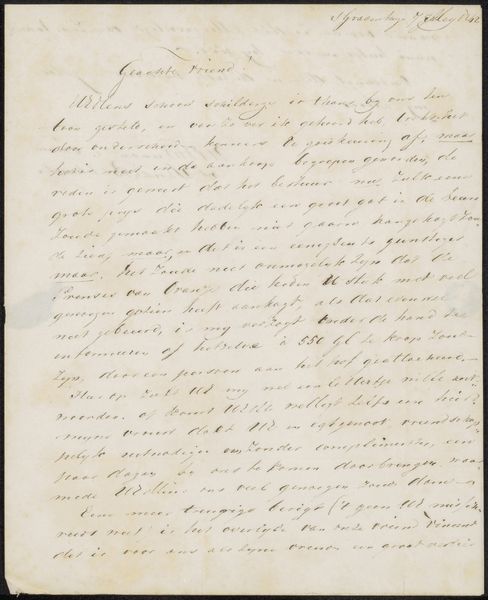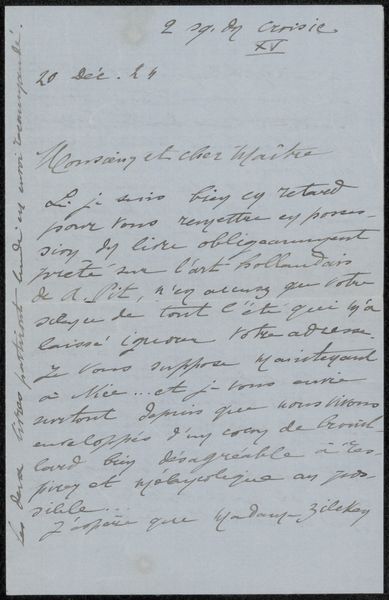
drawing, paper, ink
#
portrait
#
drawing
#
hand-lettering
#
incomplete sketchy
#
hand drawn type
#
hand lettering
#
paper
#
personal sketchbook
#
ink
#
hand-drawn typeface
#
ink drawing experimentation
#
hand drawn
#
sketchbook drawing
#
sketchbook art
Copyright: Rijks Museum: Open Domain
Curator: Here at the Rijksmuseum, we have a fascinating drawing, thought to be from 1863, by Joseph Hartogensis. It's titled "Brief aan Christiaan Kramm," which translates to "Letter to Christiaan Kramm." The medium is ink on paper, a style he seemed to use frequently for personal sketches and correspondence. Editor: It looks more like a snapshot of thoughts than a polished work. The script gives it a restless energy, jumping between thick and thin lines. The tight, dense handwriting speaks volumes about the man behind it. Curator: Hartogensis was a prominent figure in the Hague art scene, very interested in printmaking, and a known collector. Examining the letter’s text offers a look at his social network and possibly even a deeper insight into his engagement with the contemporary artistic discourse of his time. Editor: The fact it's a letter immediately implies a power dynamic, a reaching out. Who was Christiaan Kramm to Hartogensis, and what did Hartogensis want from him? The content could unlock crucial perspectives on the period’s cultural biases and artistic preferences. Curator: Kramm was a painter, an art critic, and a museum curator. I think Hartogensis reached out to Kramm regarding artists. The drawing also tells of some research done by Hartogensis over those various artists. The language certainly speaks to someone immersed in artistic circles and probably a peer. Editor: Note the unfinished quality of some of the letters, the lines trailing off. The spontaneity gives this letter a unique emotional resonance. We get to peek behind the curtain, glimpsing at the inner workings of this important artistic figure of his time. What kind of role do these incomplete, hand-drawn aspects play when we exhibit this in a museum? Is it truly an intentional choice for display, or does it merely exist to offer context? Curator: The physicality of this piece connects us to the very personal act of creation of an intimate and individual piece, to the time, to Hartogensis himself. Editor: And perhaps invites us to consider, or maybe reconsider, the dialogues and discourses that shaped both artistic creation and those bygone days. Thank you for sharing.
Comments
No comments
Be the first to comment and join the conversation on the ultimate creative platform.



